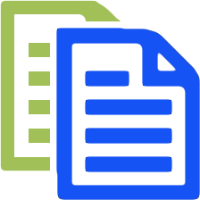Scan to Evernote (without Fujitsu ScanSnap)
16 Jan 2010For some time now Fujitsu ScanSnap has been a well publicised way to get your scans into Evernote with a minimum of fuss. I don’t have a Fujitsu scanner, but I did have a desire to get my an all-in-one print/scan/fax unit to fit into some sort of scan to Evernote work flow. Thankfully it was surprisingly easy.
Every scanning device these days comes with some sort of scan manager software which will let you quickly set-up profiles to scan items of a particular size, resolution, etc. They typically also allow you to set details about the output format including the file type, file naming convention and destination.
ScanSnap is effectively a scan manager that does just this only rather than a destination folder you pass it a destination application. I guess the reason this works is because if you run the Evernote executable (on Windows at least), with a file path as the first parameter it will try and create a note out of the file.
My typical scanning profile is for A5 sheets from my notebook/file and since my all-in-one unit has a sheet feeder this is really easy to scan. I did however spend some time getting the resolution and contrast settings right to keep the file size down but the content legible. Because I mostly scan hand written notes I scan to JPEG as Evernote will scan the images and try to recognise the text content (OCR).
If for some reason you don’t have a scan manager for your scanner (maybe you inherited it?) MetaDMS looks like it has a freeware scan manager that might do the job. I haven’t tried it myself, but leave a comment if you find it does (or doesn’t) do the job with your scanner.
Once you have your scan profile set-up and you have specified an output directory, you need to configure your Evernote to watch this output folder.
In the Windows 3.5 Beta the option to add a watched folder is available as an item called “Import folders…” under the “Tools” menu. In the Windows 3.1 version it is available on the “File Import Tab” that is available from the “Account Properties” menu item under the “Tools” menu. Just add the folder and decide if you want the file to be removed after import into Evernote.
Unlike ScanSnap which I believe will import directly into the default notebook, setting a watch folder allows you to choose which notebook to import into. I specifically created a local notebook on the PC which the scanner is attached to. This ensures that I can control the flow of scans into my cloud sync’d notebooks and that if I’m approaching my monthly limit I can just push up the most essential scans and save the others for re-filing next month. It also means that the inevitable scan errors (usually a double feed on my sheet feeder for me) can be corrected without wasting any upload allowance.
I can think of one notable advantage for ScanSnap in that even if Evernote is not open it will still add it into the default Evernote database. However if you’re an Evernote user why wouldn’t you have Evernote open and overall I think the option to save to a notebook of choice (including local) suggests that watched folders would give a better scan to Evernote work flow.
Remember too that you could duplicate profile settings but change the destination folder and have multiple watched folders to make life even easier. You might want one profile to scan to a work notebook and another to scan to a personal notebook that you manage by using two different, watched, output folders for the scans.
So make use of that scanner and get your notes into Evernote so you can declutter your desk in 2010.
 Scroll the menu to find all the places to visit
Scroll the menu to find all the places to visit


